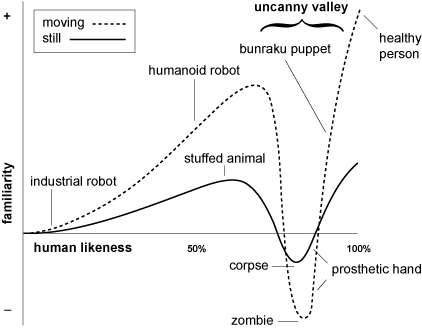I will be giving a talk about “The Uncanny Valley”, free and open to the public, at Neumann University (near Philadelphia, PA) on the early evening of Oct 23rd. This event doubles as an early bird festivity for Raw Dog Screaming Press’ exciting conference, DogCon4. [Raw Dog is the parent company for Guide Dog Books, who is slated to publish The Popular Uncanny later this Fall/Winter.]
This is a return of the uncanny to Neumann, where I gave an invited lecture on “The Popular Uncanny” back in 2012. To get the flavor, you can watch that lecture on youtube:
Details about my talk, DogCon4, or any of my upcoming appearances can be found on my event page.
For those Pennsylvanians who can’t make it to Philly, a follow-up talk on the Uncanny with PARSEC is coming to Pittsburgh on Dec 12th.

Hello there, that looks absoutely fascinating – are you going to be recording this one too? I’d love to see it.
I have, at long last, finially finished my PhD on the uncanny valley – but I’m still keenly interested in the area, and busily preparing several papers and my thesis for publication. One of my outputs was a research framework for how to ask valid empirical questions about whether the effect exists and what might cause it. There’s such a wealth of new research in this area at the moment, it’s an exciting time.
If you ever need a psychological perspective on the UVE, please do get in touch, I’d be delighted to contribute.
Thank you so much, Stephanie — much appreciated! It’s amazing how much research is happening in this area, but the key question you mention (“whether the effect exists”) is central. I think of it as a valid structure of a psychological affect, but remain skeptical of the content that we put on Mori’s chart — it is often ideologically motivated, demonizing the traits of marginalized social groups.
If something is recorded, I’ll post here for sure.